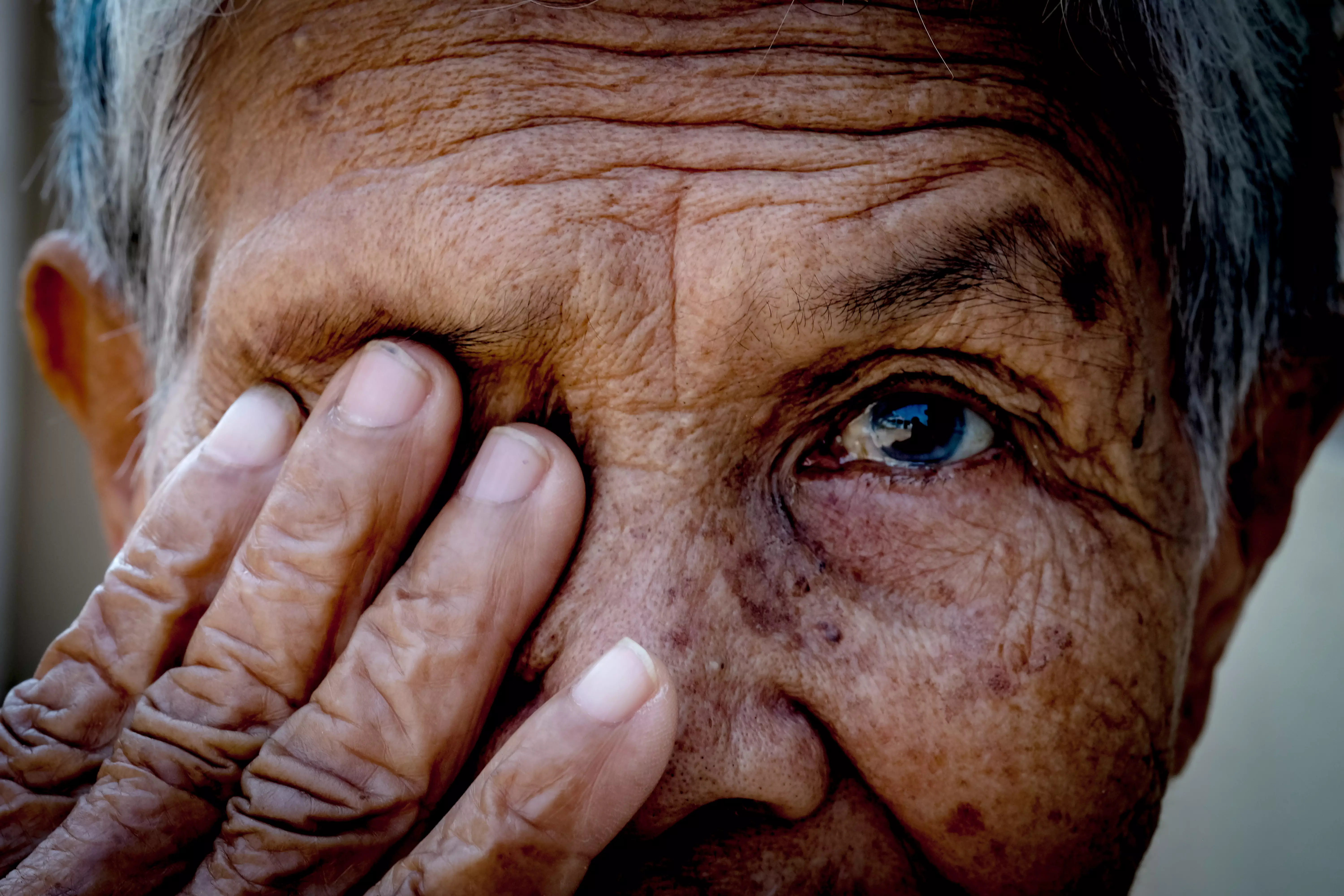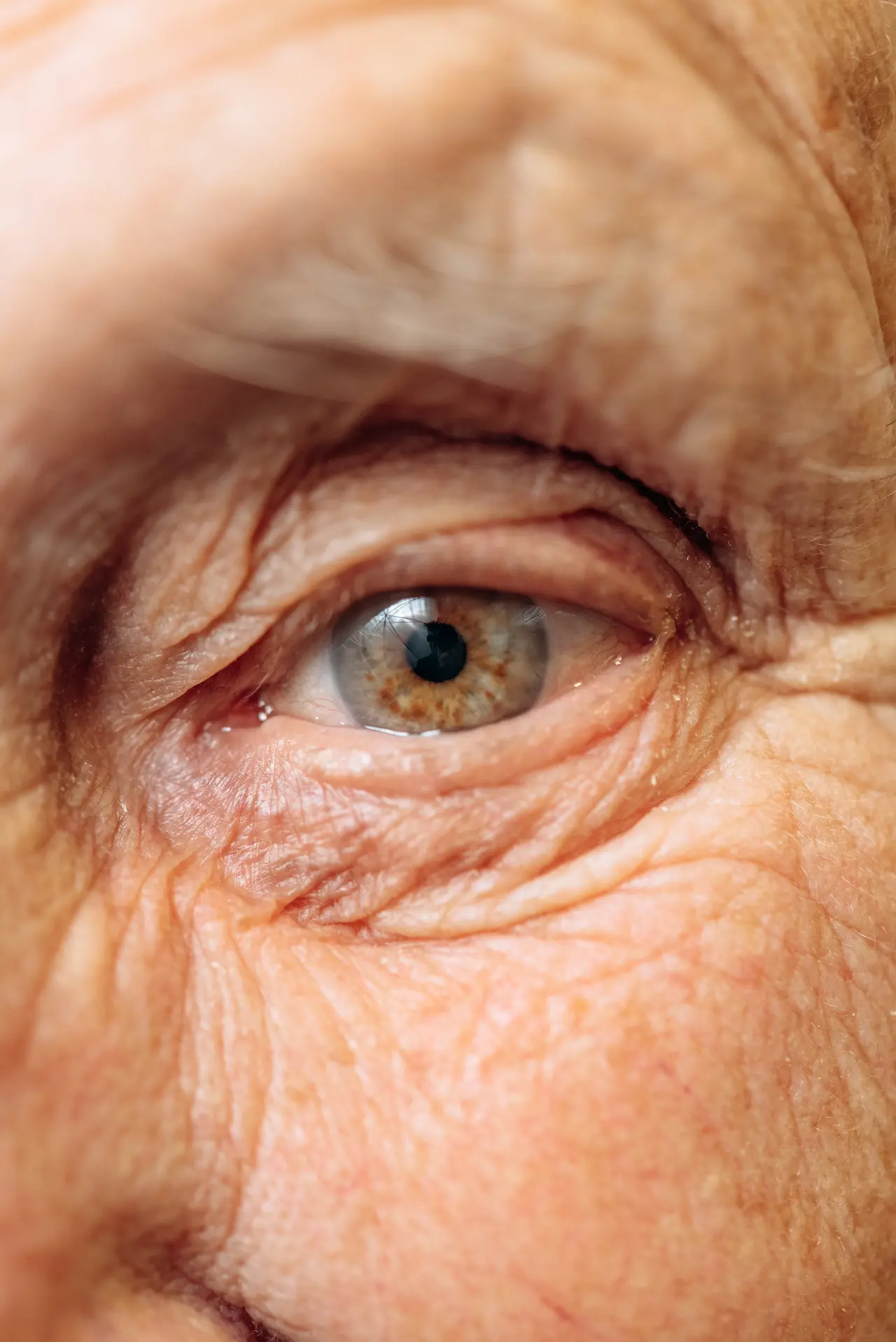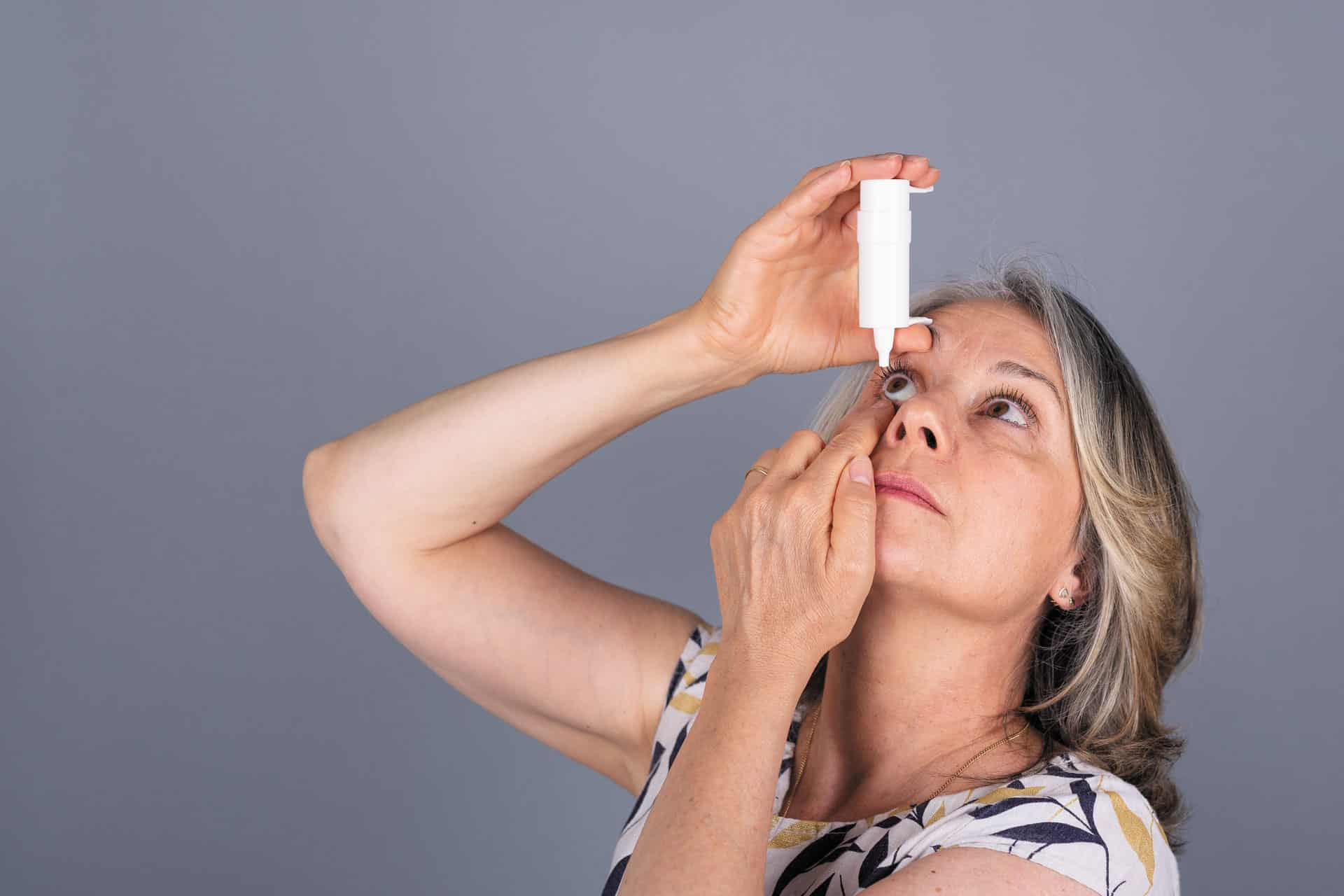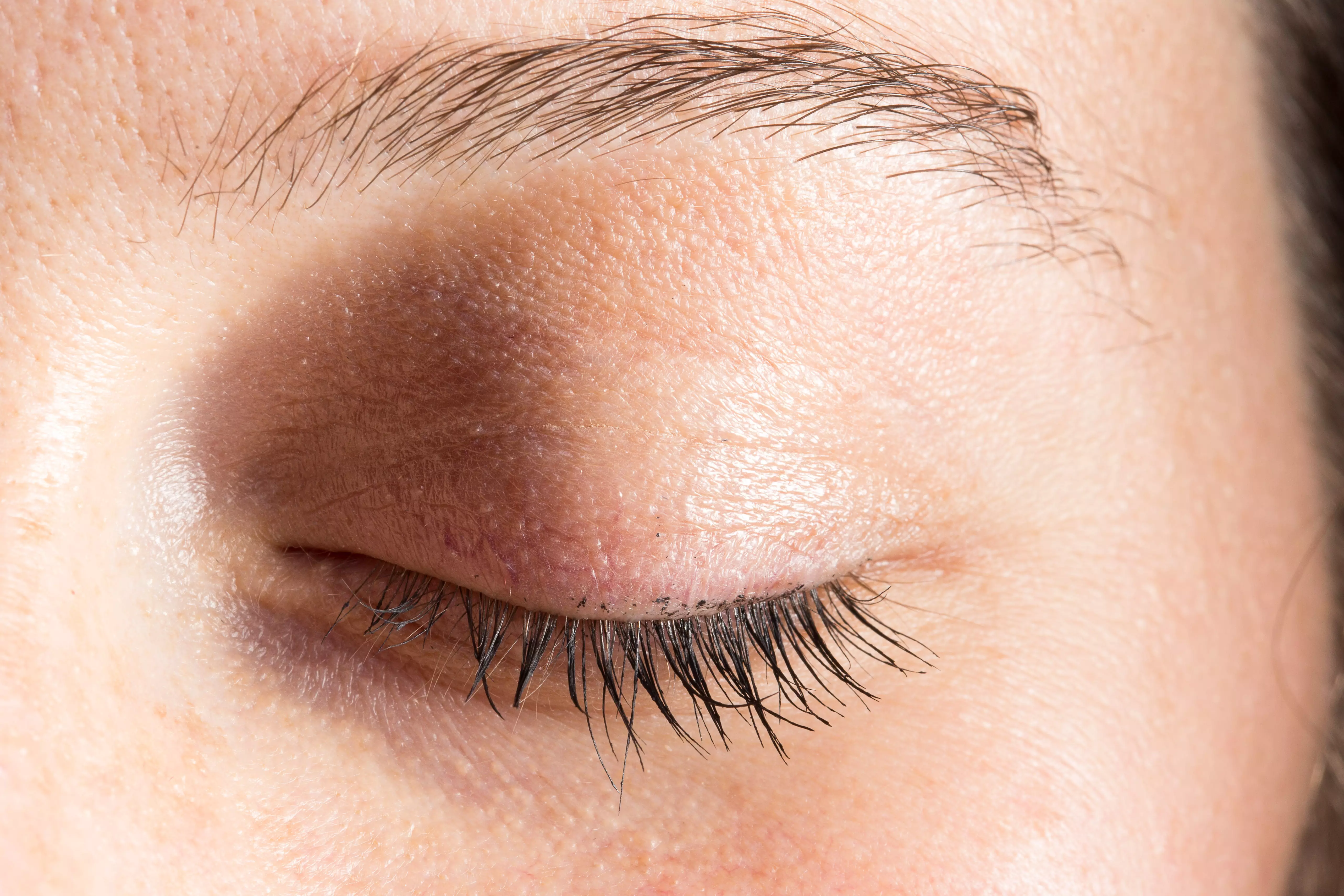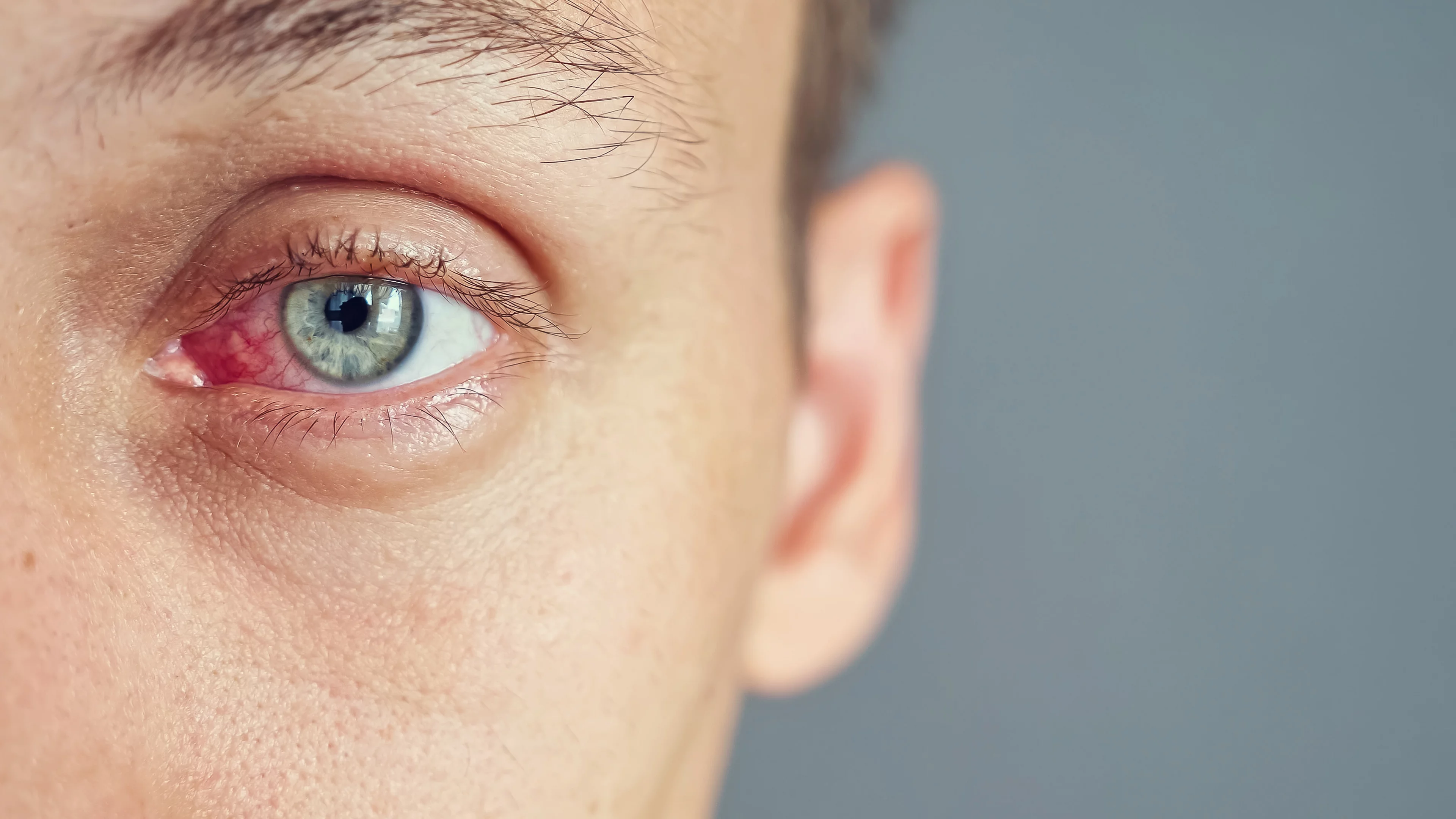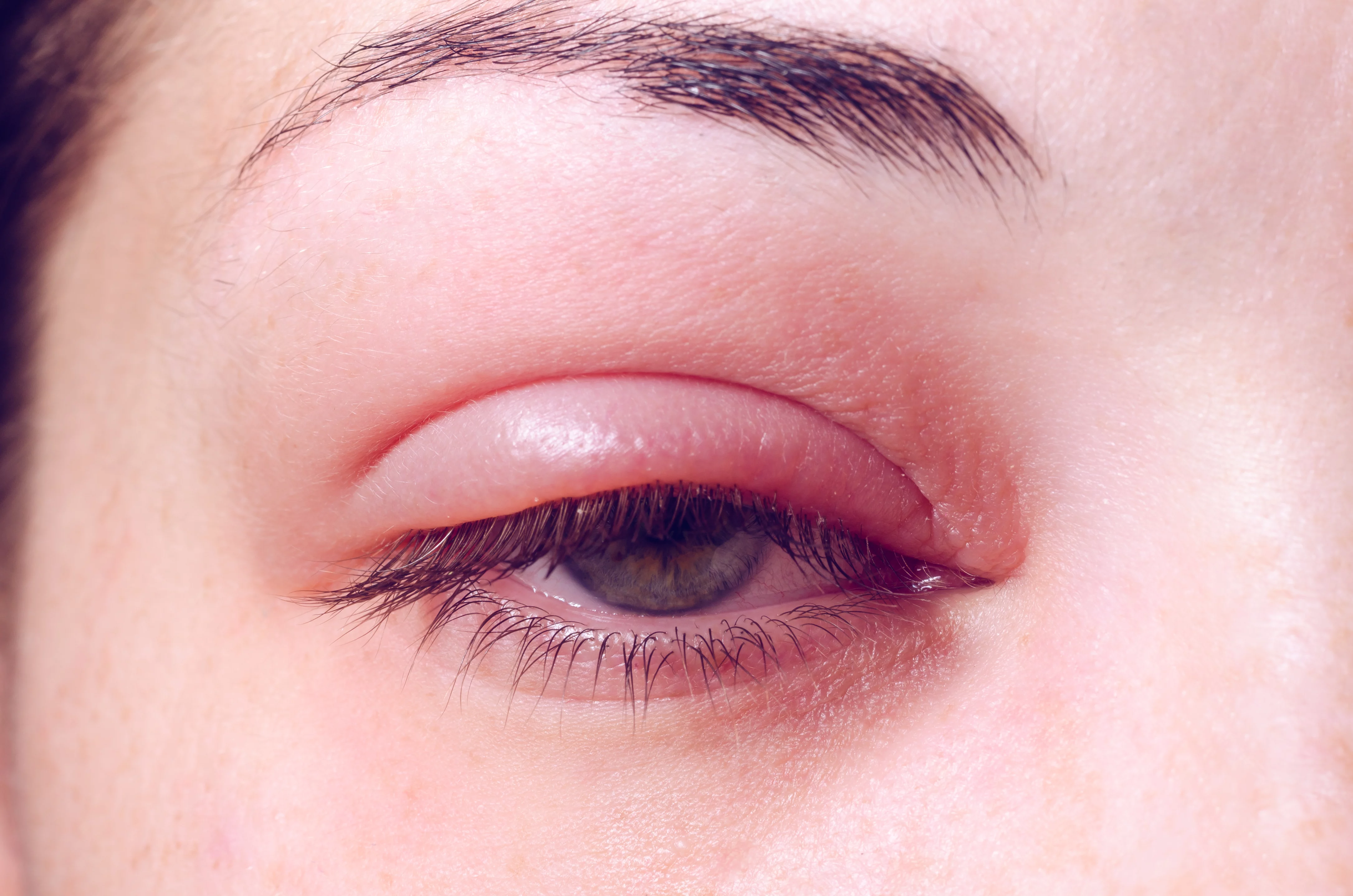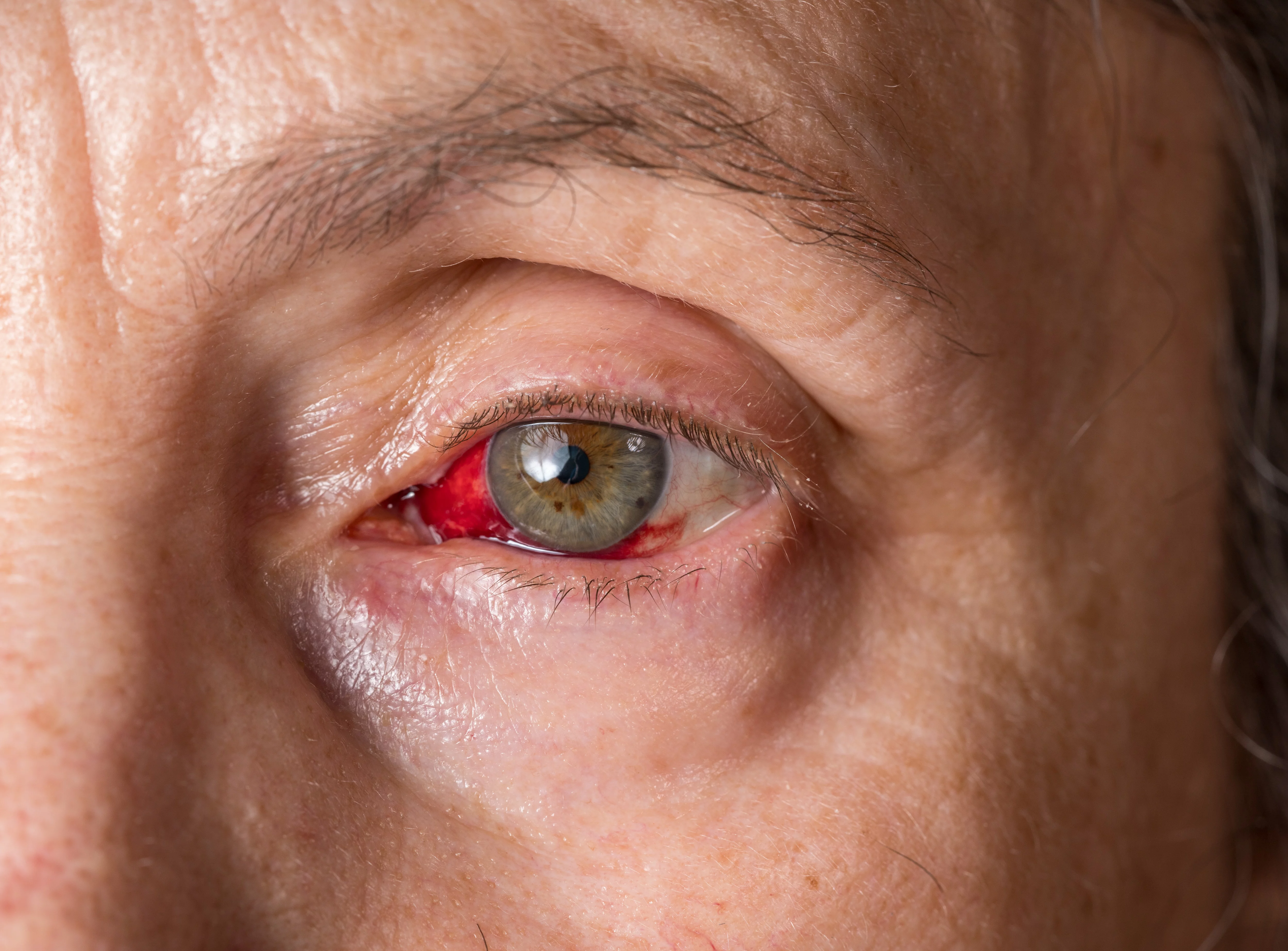There are many different forms of glaucoma³ , and it's more accurate to talk about “glaucomas” rather than “glaucoma”. In practice, there are two main types of glaucoma:
- Primary open-angle glaucoma (POAG)
- Glaucoma caused by closure of the angle between the iris and cornea (iridocorneal angle), more commonly known as angle-closure glaucoma.
Ocular hypertonia
The first stage in the development of glaucoma is called hypertonia or ocular hypertension. At this stage, eye pressure is higher than normal, without destroying the optic nerve or visual field. As the risk of developing glaucoma increases with age, regular check-ups are recommended to detect any potential progression to the disease.
Open-angle glaucoma
Open-angle glaucoma is the most common form of glaucoma, accounting for around 9 out of 10 cases. Affecting both eyes, but often asymmetrically, this type of glaucoma progresses very slowly. This is because the eye's aqueous humor filtration and drainage system becomes progressively blocked, slowly increasing intraocular pressure.
Angle-closure glaucoma
Angle-closure glaucoma is often acute, i.e. it occurs suddenly. This type of glaucoma is much rarer and occurs secondary to a sudden closure of the iridocorneal angle, causing a rapid and very significant increase in intraocular pressure. It may also exist in chronic form. Signs of this type of glaucoma include severe headaches, eye pain, red eye, blurred vision and nausea. Angle-closure glaucoma requires urgent medical treatment.
Normal-pressure glaucoma
In some cases, the disease develops and continues to progress even though the intraocular pressure measurement is normal. In such cases, the optic nerve cable is probably fragile and becomes damaged, even though the pressure is at normal levels. This type of glaucoma is also treated by reducing intraocular pressure, and also requires the management of all vascular risk factors (blood pressure, diabetes, etc.).
Congenital glaucoma
Some rare glaucomas occur at birth (1 in 5000) and are known as congenital glaucomas. They can be detected early, as the increase in intraocular pressure before the age of 3 results in elongation of the eyeball, making it appear larger and fatter. Infants also show other suggestive signs, such as lacrimation and severe discomfort with light. Because of the difficulty of detecting them and their often-severe evolution, they are particularly insidious and dreadful for the future vision of affected children, requiring intensive treatment starting as early as possible.
Secondary glaucoma
In contrast to so-called primary glaucomas, whose causes remain unknown, there are secondary forms of glaucoma, generally resulting from external causes. These can be linked, for example, to ocular trauma, inflammatory disease of the eye, or treatment with cortisone or corticosteroids.
